What’s to be Done with Russian Craft
Source
'What's to be done with Russian craft?' Object 54-59 (1998)
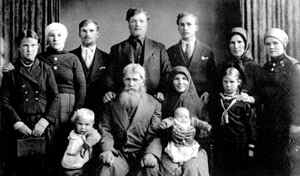
A family of Old Believers flees the Russian revolution. Their fate rests on a number of snap decisions as they negotiate their way through dangerous borders. So they pass through the Eastern border under the pretence of making a short-term visit to a Manchurian spa. When their boat docks on the island of Sakhalin, they bribe guards to let them escape over to Japan. But there is a major problem. The boat is filled with their religious paraphernalia: dozens of icons, chalices, costume and other precious objects of their faith. There is far more than they can carry in their hands. Escaping to freedom thus means consigning their sacred tradition to a watery waste. It’s an unbearable choice. Dutifully, the eldest son Emelian offers to stay on the boat and there is no time for prolonged farewells.
Emelian was never heard of again. His nephew sits opposite me, born a few days after the Guerassimoff family arrived in Queensland. Perhaps due to the sunny climate, Jules has little of that heavy orthodox manner we associate with long beards and hair shirts. He recounts his family’s tragic story with an easeful familiarity that characterises the sunshine state where he has spent his life. Not that his own life has been easy: the combined legacy of farming boyhood and rugby adolescence has etched his jocular face with a myriad of tiny scars.
I expect many Australians would share my regret that these precious objects did not survive the journey, and that new ones were not produced in Queensland. Despite the widespread migration of Russians from China after the Second World War, they seemed to play no tangible role in the Australian craft tradition. Unlike the Amish in Pennsylvania, the material culture of the Old Believers failed to adapt to fresh soil.
Now that the iron curtain has fallen, and communication has accelerated, what kind of dialogue might emerge between the Australian and Russian craft scenes? To answer this question, we need to take two steps back. Where did Russian craft come from?
Origins
Not from Russia, it seems. Compared to the short history of European settlement in Australia, Russian craft seems a positively indigenous phenomenon. But this is not so. One of the enduring features of the history of Russian craft is the importation of techniques from elsewhere.
The icon itself was imported from Byzantium with the Orthodox creed as late as the tenth century when Vladimir, Prince of Kiev, was baptised in 988. The construction and veneration of icons became significant in the thirteenth and fourteenth centuries with the work of masters such as Andrei Rublyev. Russians artists transformed the icon from a painterly representation to a wooden object of sublime colours and profound human sentiment. The icon became a material fixture of society: it fought battles, settled disputes, brought communities together and sacralised the humble home. The icon became an intensely Russian symbol, though its origin lay outside.
One of the difficulties art historians face in studying the development of icons is the absence of individual authorship. Russian artisanry is a collective endeavour: identity is ascribed to place before individual. Particular villages are legendary for the production of precious objects. While there are many such villages scattered around Russian, two stand out—one for quality and the other for quantity.
Before the revolution, the icons from Palekh were among the best in Russia. Their fame had spread around the world, attracting the interest of figures such as Goethe. The artists in Palekh were reputed to take up to a year to complete a single icon.
Though artisans from Palekh set up workshops in other cities, it was believed that the best works could only be made from within Palekh itself. There are practical reasons for this. The tempera method required the freshest of free range eggs, readily available from neighbouring farmhouses. In addition, artists’ equipment included squirrel-hair brushes and wolf’s teeth for polishing. Work from Palekh had a material link to its environment.
Though concentrated in small villages, the scale of output was staggering. During the nineteenth-century, the village of Kholui (Finno-Ugrian for ‘marshlands’) produced up to two million icons a year. This productivity was partly due to its location at the crossroads of various highways and rivers. Its five annual fairs were famous throughout Russia. Such craft flourished in a far less centralised Russia than is the case today.
Despite the distance of these villages from Moscow, the Tsar and the Holy Synod tightly controlled the contents of their icons. They prescribed the kinds of figures and scenes that could be depicted. The word signifying position of figures in the iconostasis (chin) was also used to describe an individual’s rank in society.
Despite these prescriptions, each village established its own particular interpretation of the religious scene. The Palekh figures all displayed small feet and their world was predominantly black, red and yellow. By contrast, figures in Kholui works were more realistic and their world was greener. Such differences went beyond aesthetics. The Kholui style asserted an ideological difference from its neighbours. As a Russian specialist describes its spirit as ‘A lofty ideal, truthful portrayal, a striving for decorative effect, a fine sense of the material...’ Villages, not individuals, produced icons.
We might expect less interference in the profane arts. The secular craft object most idiomatic to Russia is the concentric Matryoshka doll. But this doll is far from ancient, and far from Russian. The Matryoshka came to Russia in the late nineteenth-century from the Island of Honshu in Japan. The first dolls depicted not a well-padded family, from Babushka to toddler, but the Buddhist sage Fukuruma. Also from Japan comes the technology of lacquer-ware, on which the folk tradition of illuminated miniatures is based. Russian craft owes a great deal to its eastern neighbours.
Court
The more conventional crafts developed under sponsorship of the Tsarist court. In a way often ridiculed by writers such as Tolstoy, the Russian aristocracy aspired to Western manners and spoke French before their own language. Peter the Great’s secret trip to the Dutch Provinces inspired him to establish a ceramics workshop along the lines of Delft.
The Tsar eventually commissioned the Imperial Porcelain Factory in St Petersburg—partly to please his daughter, Elizabeth, who had a passion for porcelain. Unable to steal the secrets of porcelain production from the European workshops, he commissioned the chemist Dmitri Vinogradov to invent the science of ceramics, more or less from scratch. Under Catherine the Great, this factory produced large services for whole banquets, glorifying the Empress’s achievements. As the empire expanded, a series of ceramic figures, representing Russian traders and craftsman became quite popular. Russian ceramics played an important role in the assertion of national identity. Any change to that identity had to alter, at some stage, the production lines of the Imperial factory.
Revolution
The victory of the Bolsheviks was initially catastrophic for village artisans. Religious imagery was forbidden in an atheist state. All of a sudden, Russia’s finest craftspeople were without employment and their revered religious works replaced by photographs of Lenin. But, as the Russians say, ‘There is no evil without good’, and so the imaginative response to this discontinuity produced most of what we know take to be ‘traditional’ Russian craft.
Today, Palekh is renowned not so much for its religious icons as its illuminated miniatures on folk themes. This change of direction came under instruction from the Scientific-Research Institute of Artistic Industry (NIIP) in Moscow. They provided papiêr-maché boxes from the village of Fedoskino on which the icon painters could restore their craft.
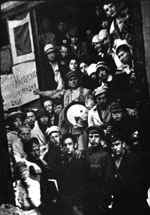 Under
the supervision of Nikolai Golikov, the painters developed scenes that
abstracted the background scenery from their icons and inserted stories
from folklore and political life. The transformation was sudden and the
results impressive. Golikovs’ artel was awarded a gold medal for
exhibit in Paris, only a year after its formation. The French writer Romain
Roland even made a pilgrimage to Palekh in 1935 to witness the source
of this inspiration.
Under
the supervision of Nikolai Golikov, the painters developed scenes that
abstracted the background scenery from their icons and inserted stories
from folklore and political life. The transformation was sudden and the
results impressive. Golikovs’ artel was awarded a gold medal for
exhibit in Paris, only a year after its formation. The French writer Romain
Roland even made a pilgrimage to Palekh in 1935 to witness the source
of this inspiration.
Thanks to state intervention, icon painters not only managed to continue their craft but a new tradition was also born.
Meanwhile, in the centres, the Soviets set to re-engineering the Imperial Porcelain Factory. The Suprematists, led by Kasimir Malevich, renamed it the No.1 State Porcelain Factory and proceeded to put their radical aesthetic into action. The results were even more dramatic than the village developments, though ultimately less enduring.
Malevich’s involvement in ceramics will be a surprise to some. While he is much better know for his abstract paintings and mystical modernism, the applied arts were an integral part of the Suprematist ideology. It is interesting to note that Malevich’s attitude to craft has certain resemblances to the virtual ceramists emerging today. For him, art must be unified with technology, particularly its most utopian dimension, such as plane travel. As he said in 1918: ‘Let tall needles and flying houses prepare to take off. Let wedge shapes cleave to the bosom of space.’
Like the Constructivist Tatlin in Moscow, the Malevich’s Suprematists were anxious to find avenues for their ideas to disseminate into everyday life. Likewise, it was essential for the revolution to define itself by replacing the previous ornate aesthetic at this factory with a new set of designs suitable for the people’s revolution.
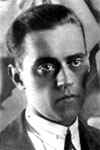 Malevich
delegated this task to one of his most loyal disciplines, Nikolai Suetin,
whose slogan was, ‘I multiply the world’, Suetin applied Suprematist
architectons to traditional tea and coffee sets. The circular framework
of these objects suited well the dynamic energy of their abstract forms.
Malevich
delegated this task to one of his most loyal disciplines, Nikolai Suetin,
whose slogan was, ‘I multiply the world’, Suetin applied Suprematist
architectons to traditional tea and coffee sets. The circular framework
of these objects suited well the dynamic energy of their abstract forms.
In addition to modern aesthetics, Suetin attended to the subtle relationship between design and capital.
Suprematist china design posed the problem of a new attitude to the objective value of things. It tried to highlight the artistic value of objects to the utmost, while minimising their commercial and ostentatious features. Thus, if a cup in a traditional coffee set, which all the cups have the same pattern, was broken, the set would lose its ‘commercial’ value. In Suetin’s Suprematist set, on the other hand, it would lose only part of its artistic value, because each cup was differently decorated. (Zhdanova, 1982, 108)
 Eschewing
the romance of an artist, Suetin oversaw the production of coffee sets
with titles such as Industrialny, Agrogorod and Traktorny.
With Anna Leporskaya, he designed the awesome USSR Pavillion of 1937 Paris
International Exhibiiton. In the tradition of the artel, much of the work
was presented anonymously.
Eschewing
the romance of an artist, Suetin oversaw the production of coffee sets
with titles such as Industrialny, Agrogorod and Traktorny.
With Anna Leporskaya, he designed the awesome USSR Pavillion of 1937 Paris
International Exhibiiton. In the tradition of the artel, much of the work
was presented anonymously.
For all their good intentions, Suprematist ceramics failed to reach a popular audience. Today, it can only be found in museums, rather than kitchen tables. The opportunity now lies with 21st century ceramists to realise their vision.
After communism
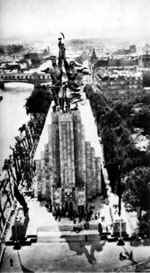 Given
the history of external interference, we may well ask where the direction
for Russian craft will come now the party is over. Given the grand narrative
of the 1990s ‘Velvet Revolution’, we might expect a wave of
hitherto repressed creativity to be unleashed. We note the return of icon
painting, both in its traditional form and in new media such as holography.
But what of the folk arts?
Given
the history of external interference, we may well ask where the direction
for Russian craft will come now the party is over. Given the grand narrative
of the 1990s ‘Velvet Revolution’, we might expect a wave of
hitherto repressed creativity to be unleashed. We note the return of icon
painting, both in its traditional form and in new media such as holography.
But what of the folk arts?
Contemporary Russian craft is an elusive phenomenon. There are no magazines to access, and the World Craft Council has no Russian representatives. An Internet search brings up a number of American online souvenir stores, and one individual artists working in the style of Mezen, to whom we’ll return later.
My last visit to Moscow was twelve years ago, during the first years of Gorbachev’s rule, when the Communist Party seemed as solid as the Kremlin walls. The changes that struck me this time were not so much in architecture or fashions, but in the advertising on the streets. Deprived of the white goods that give consumerism substance, the Moscow population was being sold the taste of capitalism, in soft drink, chewing gum, cosmetics and cigarettes. Most of the brands were familiar¾ Winston, Coca-Cola and Yardley¾ but the slogans were quite foreign.
 Billboards
for Coca-Cola showed an image of the radiant sun drinking from a Coke
bottle with the phrase, ‘Make your own weather’. Set against
the inexorable Russian winter, such advertising seemed to channel the
other-worldly Russian imagination away from the real world of political
change and towards the inner world of Western consumerism. Such revolutionary
consumerism adds urgency to the craft revival.
Billboards
for Coca-Cola showed an image of the radiant sun drinking from a Coke
bottle with the phrase, ‘Make your own weather’. Set against
the inexorable Russian winter, such advertising seemed to channel the
other-worldly Russian imagination away from the real world of political
change and towards the inner world of Western consumerism. Such revolutionary
consumerism adds urgency to the craft revival.
The Museum of Folk Art offers sanctuary from the soft sell on the streets. There, in dusty cabinets, is an assortment of Russia’s finest folk traditions. While the labels are exclusively in Russian, there is one detail that harbours quite a surprise. It seems obvious that such exquisite craftsmanship must come from a distant time and place. Yet, the finest traditional pieces seem to be from the 1980s and 90s. In this museum, ‘traditional’ does not mean ‘old’.
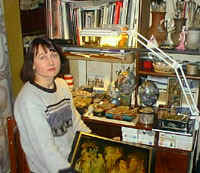 Nor
does it mean from the village. After some research, it seemed most of
the artists are working in Moscow. One of the most ornate lacquered boxes
was made by Valentina Smolenskaya, whose residence looked more or less
like any other Moscow apartment—an abundance of soft furnishings,
books and knick-knacks. As a miniaturist, she required only a minimal
working space, such as a kitchen table or writing bureau. I was curious
that her work was so traditional. When I inquired if the end of communism
had affected her work, Valentina replied that it had given her license
to use themes related to the Tsarist era, such as short stories by the
émigré novelist, Vladimir Nabokov. Did she ever draw from her own time?
She proudly pulled out a family portrait, done with traditional detail.
However, this work was considered recreational and not appropriate for
public viewing.
Nor
does it mean from the village. After some research, it seemed most of
the artists are working in Moscow. One of the most ornate lacquered boxes
was made by Valentina Smolenskaya, whose residence looked more or less
like any other Moscow apartment—an abundance of soft furnishings,
books and knick-knacks. As a miniaturist, she required only a minimal
working space, such as a kitchen table or writing bureau. I was curious
that her work was so traditional. When I inquired if the end of communism
had affected her work, Valentina replied that it had given her license
to use themes related to the Tsarist era, such as short stories by the
émigré novelist, Vladimir Nabokov. Did she ever draw from her own time?
She proudly pulled out a family portrait, done with traditional detail.
However, this work was considered recreational and not appropriate for
public viewing.
Signs that this might be changing are evident in embryonic forms of patronage. There is reported to be a new trade in miniatures depicting Mafia figures with their imported cars and mobile phones. Here there is a straight progression from the Church to the Communist Party to the Mafia. Similar developments on the Internet offer Russian artisanry to requested themes, such as Canadian motifs. Its promise is more in satire than straight craft.
Despite political changes, miniaturists like Smolenskaya are still represented by the NIIP, which provides gallery space and shop. The proudest items in their shop bear the label, ‘Authentic copy from author’s first copy’. In Russian logic, a copier improves on the author, who by nature puts more emphasis on design than execution.
I asked the resident writer Larissa Solovieva if Russian craft had changed
in recent times. She was adamant that it hadn’t. For her, the very
endurance of Russian craft gives it an authenticity that is lacking in
the West. It’s a matter of staying still while the rest of the world
catches up. While it’s an unfashionable policy, at least it stands
out from the crowd.
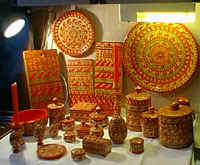
Offline
With such momentous political change, surely there must be some development in craft production. The search for a new Russian craft eventually reached its end where it began, on the Internet. In the emerging cyber-folklore, there is an ‘offline’ romance associated with physically being somewhere that you have travelled virtually. So what kind of artist would put her work online for audiences outside Russia?
I expected to meet a worldly artist, well read in the latest magazines and anxious to convey a cosmopolitan world view. This was far from the truth. Vera Sedova lived in an ordinary apartment block in Palekhskaya Street, named after the village. She didn’t speak any English and she certainly had no computer. An admirer had put here work and translated text online.
The notion that someone from Australia would come all the way to visit her was a cause for amazement, but to be taken in stride. Vera Sedova was kind of person who treats life as though it were an equestrian sport. To peruse a catalogue of Australia craft she flicks her ponytail and spits on her fingers. Because of the language barrier, our conversations became like playing tennis with a short-sighted partner. The obvious was possible, but anything beyond that left us fumbling around with dictionaries.
For our second meeting, she left me with a handwritten answer to my question about the end of communism, hoping I’d translate it later.
When was with folk trade better: during socialism or now? With socialism everyone studied together. We all designed work in the Russian craft worker’s museum and scientific historical offices…
Individual productions were almost absent. To operate as an individual and sell one’s goods was forbidden. It was craft by the conveyor belt, and not unique goods.
Now everything has changed. Many folk and professional artists are creating decorative items. Everything is original and unique. But these goods were few and quite expensive. As workshops arose, so people with them have left. Several museums closed….
Nearly three years ago, the situation began to change. Exhibitions began to be organised. The smaller factories and studios of folk masters began to be reconstructed. Still, in the big cities, it was cheaper to produce and sell… But with the system of work according to restoration of village folk trade has not taken off. There are no distribution offices. Everyone studies alone and the old masters in the villages pass on their craft to no one. Museums are so poor, that simply do not have the strength to preserve what they already have.
Vera Sedova has made it her personal mission to promote the craft of a small village on the northern reaches of Russian, near Arkangelsk. From her web site, you can learn about the Mezen motifs and what they signify. For Sedova, craft involves not only mastering traditional forms, but also wearing them.
I inquired about buying some of the work she displayed on her kitchen stove, but she insisted on making new pieces especially for me. This was a cause of much confusion. I thought she was deferring to hospitality, which I did not want to exploit. She continued to resist my demands for immediate purchase. After many attempts, I eventually realised the cause of our misunderstanding. Sedova was operating like a village shaman, for whom work was not aesthetic but medicinal in nature. To sell me work, she had to assess my character and arrange the various motifs accordingly. She could no more sell me a work off the shelf than a doctor would offer a catalogue of drugs to patients.
I couldn’t help but be disconcerted by her lack of ‘professionalism’. I challenged Sedova that her work was frozen in time. Rather than disagree, she accepted the compliment: ‘It’s like an alphabet, where the terms are fixed, but you can make different meanings.’ The Nordic strength of the work, its hieroglyphic complexity, and this direct contract with the audience eventually won me over. Sitting in her tiny Moscow apartment, surrounded by the force of Mezen, there seemed a hint of a new Russian craft.
There may well be other Vera Sedova’s scattered around Russia. They no longer have any central organisation other than the imaginary village where they have never been. Though the work appears traditional, its structure is quite contemporary.
Craft converges on her work from two directions. From the village, she releases folk craft from its tourist framework and grants it a power reminiscent of its pagan origins. And from the Suprematist past, she is finding a new path for art to take into everyday life, where symbols are charged with physical energy.
Back home
For Australians, there seems something both to learn and to teach in Russian craft. We can learn something about state intervention, which today is often viewed as shameful dependence. Our critics accuse government of ‘propping up’ unworldly cultural practices and artists of pandering to official agendas. It is salutary, then, to look at a cultural history such as Russia’s where craft has benefited from outside control.
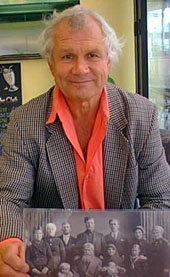 And
from Australia, Russia has much to learn about the process of ‘exploring’
craft. The Matryoshka is a good starting point. Imagine the rich series
of investigations, both personal and social, that an Australian craftsperson
might lend to the unveiling form of the concentric doll.
And
from Australia, Russia has much to learn about the process of ‘exploring’
craft. The Matryoshka is a good starting point. Imagine the rich series
of investigations, both personal and social, that an Australian craftsperson
might lend to the unveiling form of the concentric doll.
There is much ground to make up…
By now, Jules Guerassimoff is recounting tales of his own boyhood. The religious upbringing was strict: from as early as three years of age, he was forced to stand up for long prayer vigils. His family’s pride was focused on the most splendid remaining icon of the Virgin Mary. Jules tells me its sad but just fate:
During one particularly severe drought, my grandmother insisted on accompanying us boys out on a fishing trip. She wrapped the icon in cloth and took it with her. When we stopped in our spot, she suddenly started mumbling and praying in a weird way. Then she got out the icon and threw it into the water. That was it. It just sunk with all that metal on it. No way anyone would find it now. It didn’t stop the drought, though.
Somewhere, off the Gladstone coast, there is a magnificent icon lying at the bottom of the ocean, attempting to convert the passing snapper or shark. It’s like a scene from the myth of Kitezh, as told by Chekhov:
Perhaps also somewhere at the bottom of a lake lay a purer existence than existed on land—perhaps the ‘shining city of Kitezh’ which was said to have descended uncorrupted to the bottom of a trans-Volga lake at the time of the first Mongol invasion.
Perhaps the time is ripe for the lost Russian culture to re-emerge from its depths into a less isolated world. Divers wanted.
Sources
I.V. Andreeva `The history of Russian porcelain: By way of an introduction’ Russian Porcelain: 250 Years Moscow: Avangrad, 1995
James H. Billington The Icon and the Axe: An Interpretive History of Russian Culture New York: Vintage, 1970
Elena Govor Australia in the Russian Mirror: Changing Perspectives 1770-1919 Melbourne: Melbourne University Press, 1997
Roy Robson Old Believers in Modern Russia DeKalb, Il: Northern Illinois University Press, 1996
Vadim Shchanitsyn Palekh and Palekhians Moscow: , 1994
L.N. Soloviova Kholui: Lacquered Miniatures Moscow: Interbook Business, 1991
L.N. Soloviova Matryoshka Moscow: Interbook Business, 1997
Larisa Zhdanova Malevich: Suprematism and Revolution in Russian Art 1910-1930 New York: Thames & Hudson, 1982
Links
 Research
and writing of this article was made possible by an Australia Council
grant.
Research
and writing of this article was made possible by an Australia Council
grant.
Kevin Murray©1998

Copyright held by author Kevin Murray
For permission to reproduce this article, please contact Kevin
Murray